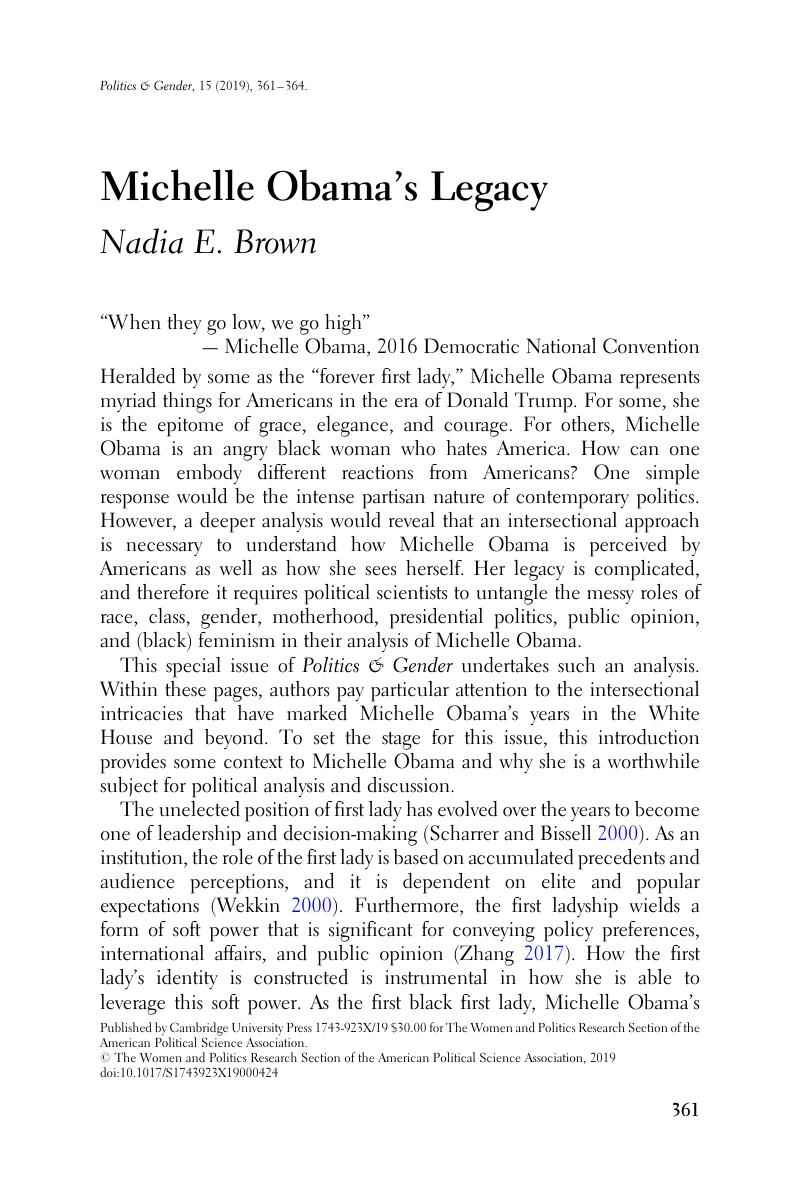No CrossRef data available.
Article contents
Michelle Obama's Legacy
Published online by Cambridge University Press: 15 August 2019
Abstract
An abstract is not available for this content so a preview has been provided. Please use the Get access link above for information on how to access this content.

- Type
- Research Article
- Information
- Politics & Gender , Volume 15 , Special Issue 3: Special Symposium on Michelle Obama , September 2019 , pp. 361 - 364
- Copyright
- Copyright © The Women and Politics Research Section of the American Political Science Association 2019
References
REFERENCES
Brown, Nadia. 2014. Sisters in the Statehouse: Black Women and Legislative Decision Making. New York: Oxford University Press.Google Scholar
Collins, Patricia Hill. 2000. Black Feminist Thought: Knowledge, Consciousness, and the Politics of Empowerment. 2nd ed. New York: Routledge.Google Scholar
Scharrer, Erica, and Bissell, Kim. 2000. “Overcoming Traditional Boundaries: The Role of Political Activity in Media Coverage of First Ladies.” Women & Politics 21 (1): 55–83. https://doi.org/10.1300/J014v21n01_03.Google Scholar
Watson, Robert P. 1997. “The First Lady Reconsidered: Presidential Partner and Political Institution.” Presidential Studies Quarterly 27 (4): 805–18.Google Scholar
Wekkin, Gary D. 2000. “Role Constraints and First Ladies.” Social Science Journal 37 (4): 601–10. https://doi.org/10.1016/S0362-3319(00)00099-9.Google Scholar
Williams, Verna. 2009. “The First (Black) Lady.” Denver University Law Review 86: 833–50.Google Scholar
Zhang, Lei. 2017. “The Soft Power of a First Lady—Constructing Identities for First Ladies in the Chinese and American Media.” Discourse, Context & Media 20: 33–44. https://doi.org/10.1016/j.dcm.2017.07.005.Google Scholar




